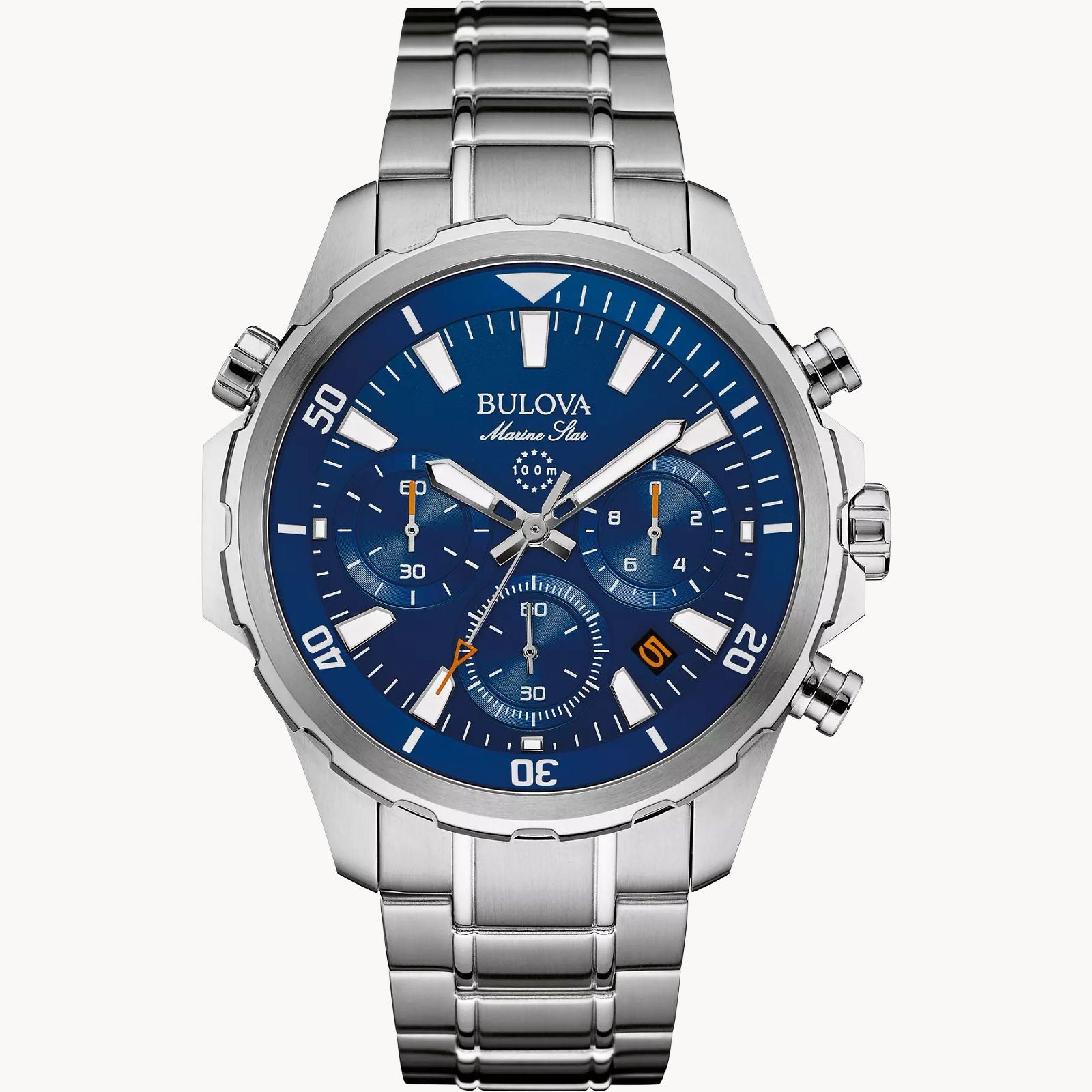Overview
The Tissot Seastar 1000 Chronograph is a beautifully crafted timepiece that is perfect for those who love the outdoors. It features a stainless steel case and bracelet, as well as a uni-directional rotating bezel with a black aluminum ring. The blue gradient dial is stunning and is complete with luminous silver-tone hands and dot hour markers. The scratch-resistant sapphire crystal protects the dial, while the screw down crown ensures Water resistance at an impressive 300 meters / 1000 feet. The solid case back rounds out this handsome timepiece.
The Tissot Seastar 1000 merges style and performance without compromising either. The diving inspiration shapes both the appearance and the functionality of this watch. It maintains its performance to a pressure of 30 bar (300m/1'000ft), combining underwater sports and a preference for a sophisticated Swiss timepiece.
Specifications
Stainless steel case with a stainless steel bracelet. Uni-directional rotating stainless steel bezel with a black aluminum ring. The blue gradient dial with luminous silver-tone hands and dot hour markers. Minute markers around the outer rim. Dial Type: Analog. Luminescent hands and markers. Date display between the 4 and 5 o'clock positions. Chronograph - three sub-dials displaying: 60 seconds, 30 minute and 12 hours. ETA caliber G10.212 quartz movement. Scratch resistant sapphire crystal. Screw down crown. Solid case back. Round case shape. Case size: 45.5 mm. Case thickness: 12.82 mm. Band width: 22 mm. Fold over with safety release clasp. Water resistant at 300 meters / 1000 feet. Functions: chronograph, date, hour, minute, second. Sport watch style. Watch label: Swiss Made. Tissot Seastar 1000 Chronograph Quartz Men's Watch T1204171104101.
About The Brand
Tissot was founded way back in 1853 by Charles-Félicien Tissot and his son Charles-Émile Tissot in the Swiss city of Le Locle – a place where the brand still remains to this day. Located in the Neuchâtel area of the Jura Mountains, Tissot initially built its reputation by building highly-reliable, gold-cased pocket watches that found a strong and appreciative audience all over the world.
From there, Tissot merged with Omega in 1930, and now both brands produce luxury watches under the greater Swatch Group umbrella corporation, which they have both been a part of since 1983. Although the company is best known these days for producing finely crafted, yet surprisingly affordable luxury watches, Tissot remains one brand that should not be left out of any discussions concerning horology and the history of the greater luxury watch industry.





































